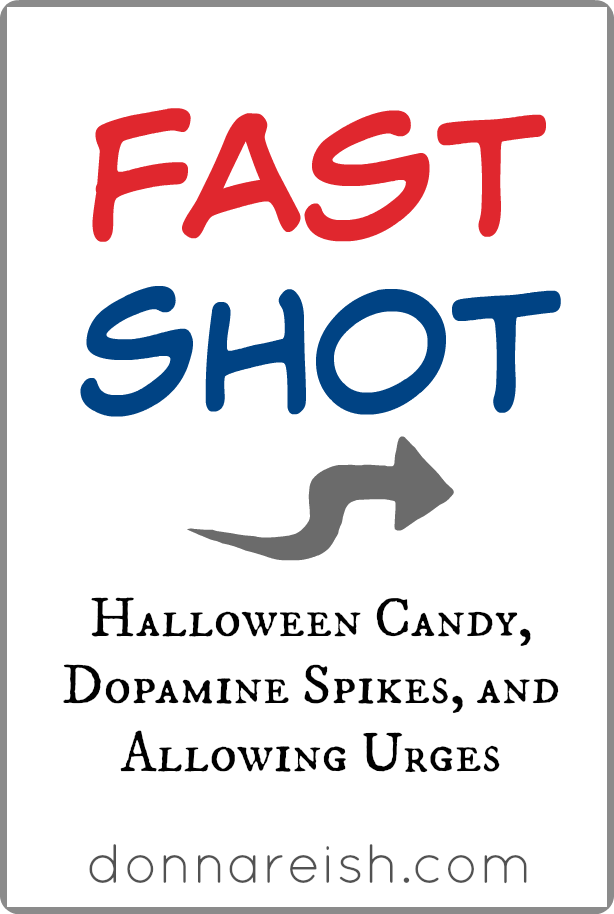
How many Halloween candies do you have left? Which ones are your favorites? Have you ever thought about why those particular candies are your faves? Come to find out, our favorites are often our favorites because of the combination of ingredients that cause dopamine spikes that make us want more and more and more of that candy.
It’s not our faults!
But we can do something about it!
Yay us!
In today’s Fast Shot video, I explain why the top three Halloween candies hold those spots in our tummies!
I also explain The Hungry Brain’s “Seductive Six” or hyper-palatable combinations that lead to overeating–and give you five work-able suggestions to reduce those cravings with Halloween candy–and all holiday goodies. These five tips are ways we can “hack” our bodies and brains and thinking and habits! I love hacks!
Let me know if these tips help you–and let me know how I can help you in the future! I want us all to succeed!!
A. Favorite Halloween Candy According to Monmouth University Study
1. Reese’s Cups (36%)
2. Snickers (18%)
3. M and M (11%)
B. Why Those Three?
1. They have what Dr. Stephen Guyenet (The Hungry Brain) calls “Seductive Factors”
2. They are hyper-palatable
3. These are the “Seductive Six” that, when combined, cause huge dopamine spikes (combined, they all lead to a food that is “calorie dense”)
a. Fat
b. Carbohydrate
c. Protein
d. Sweet flavors
e. Salty
f. Unami (meaty, savory flavor)
4. All of the top three candies have three to five of the Seductive Six elements
5. The more calorie dense/unreal/seductive the foods are, the more dopamine we release—the motivation/habit chemical in the brain
6. This is why we don’t get “fat” from Starburst or licorice! (And they those types of candies are not in the top three Halloween candies!)
C. How Can We Ward Off the After-Halloween Urges
1. Believe that urges are not urgent
a. We think they are
b. We think they overtake us or creep up on us, etc.
c. We don’t think we are an active participant in them!
2. Practice fasting!
a. Your insulin will go lower during the fast, and cravings will be reduced
b. Your satiety and hunger hormones will balance more—and you will hear them better (though remember that we don’t hear them as well with processed foods)
c. Your eating window will be less—which has to help at least in part simply by time constraints
3. Create barriers
a. Get rid of leftovers
b. Don’t be afraid to throw them away
c. Tell your kids not to let you have any of their stash
4. Plan for them
a. How many are you keeping?
b. When will you eat them?
c. Don’t eat them any time other than when you have planned for them!
d. Planning ahead uses your adult brain rather than your toddler brain!
5. Space out time between treats (especially highly seductive or hyper-palatable)
a. The longer you wait between treats, the less dopamine is released
b. New neuro-pathways are created in the brain
c. Unanswered urges become fewer urges or even no urges
d. I want to teach you not to resist (or fight!) urges…I want to teach you to feel the feelings and sit with urges without giving in until you have very few urges
e. So much better to not have urges than it is to fight them over and over! (Check out Broadcast #57 and #58 for a two-part video on Willpower!)
D. I’d Love to Teach You More
1. Free IF Webinar: https://intermittentfastingwebinar.com
2. Month-long Intermittent Fasting Course: https://intermittentfastingcourse.com
3. Private weight loss coaching: email characterinklady(AT)gmail.com










